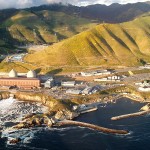Nuclear plant safety in U.S. exposed by inspections report
Nuclear plant safety has come under closer scrutiny after the damage done by the recent Japan earthquake to the Fukushima power plant.
In the wake of the disaster, U.S. federal inspectors conducted an investigation and found out that the country's nuclear plant safety situation has scored failing marks and that some plants are at risk for serious damage in case of earthquakes, fires and floods, a special report released on Friday said.
The U.S. Nuclear Regulatory Commission said that even if every one of the 104 commercial U.S. reactors were strengthened to withstand natural disasters, the same type of assurance cannot be said for emergency mechanisms by these plants that would prevent full meltdown, put out fires or divert floods.
A nuclear plant is typically made of steel and concrete but it has many other components such as electrical wiring, controls and instruments which are susceptible to fire that can put the entire structure at risk.
One recurring safety problem during the inspections was fire-protection systems which are vulnerable to strong quakes. For instance, the report said that the Oconee nuclear plant in South Carolina has "a generic vulnerability" and that "the licensee has stated that most fire suppression components may fail."
Nuclear plant operator Duke Energy said that safety mechanisms are in place to handle emergency situations at the facility.
According to NRC Office of Nuclear Reactor Regulation director Eric Leeds, "all the reactors would be kept safe, even in the event their regular safety systems were affected by these events" but also said that "a few plants have to do a better job maintaining the necessary resources and procedures."
The NRC is also updating information about seismic activity in the United States and considering scenarios of multiple disasters that can compromise nuclear plant safety.
